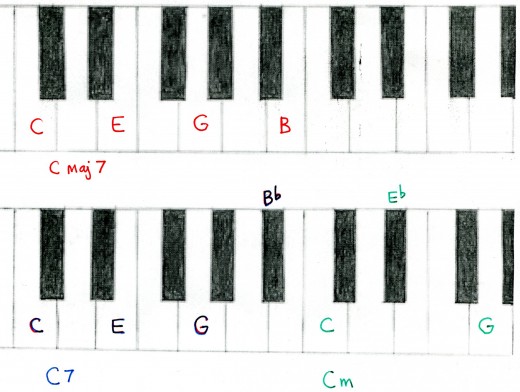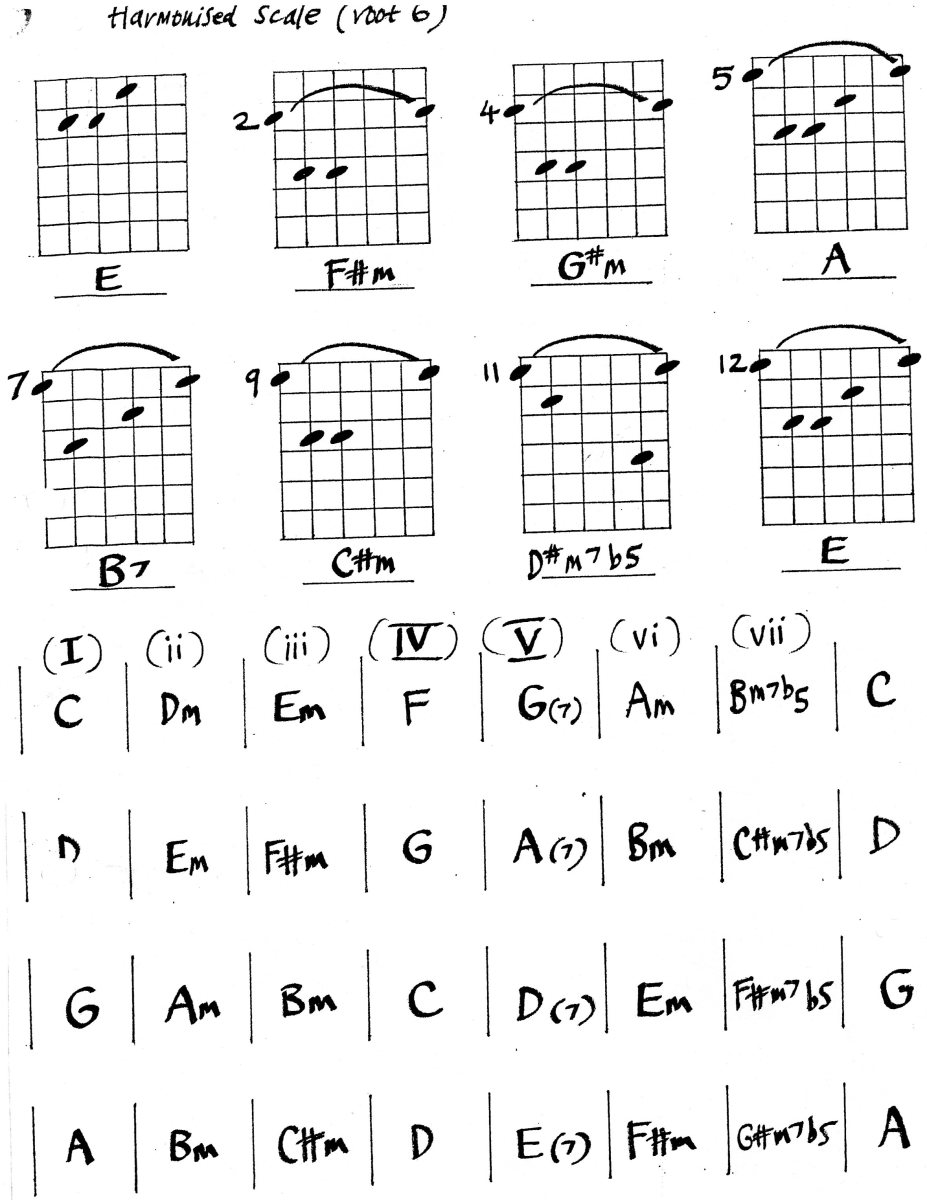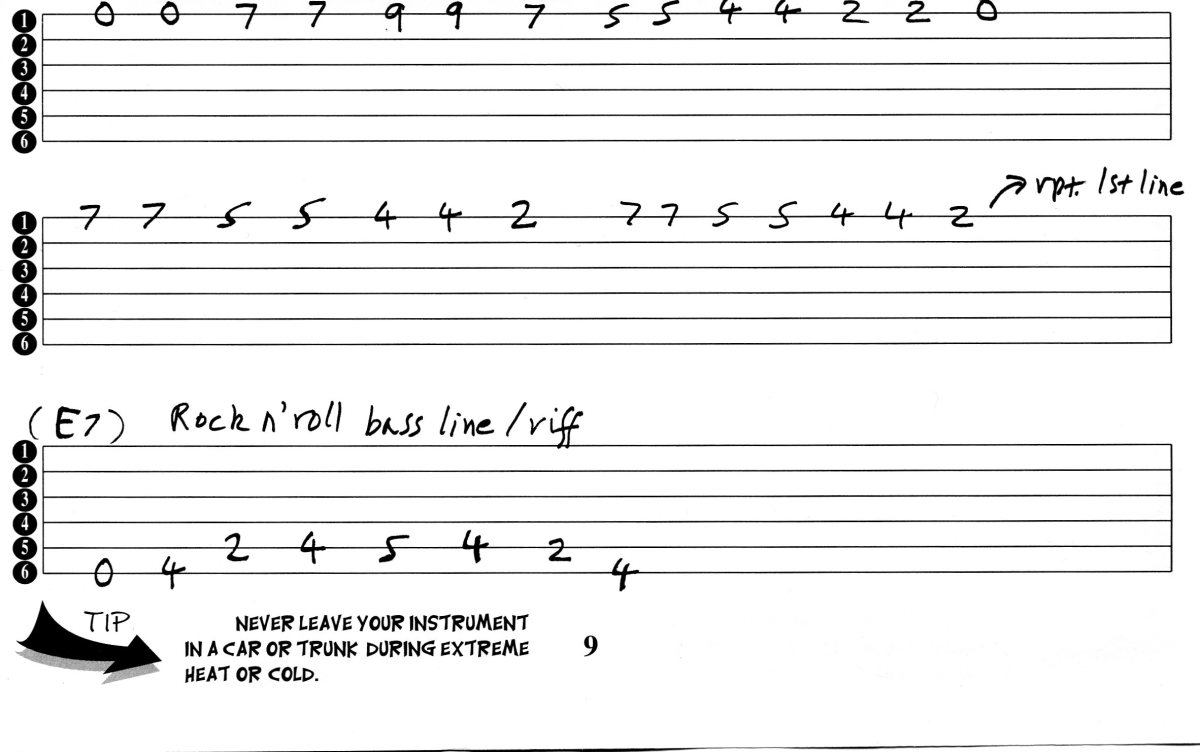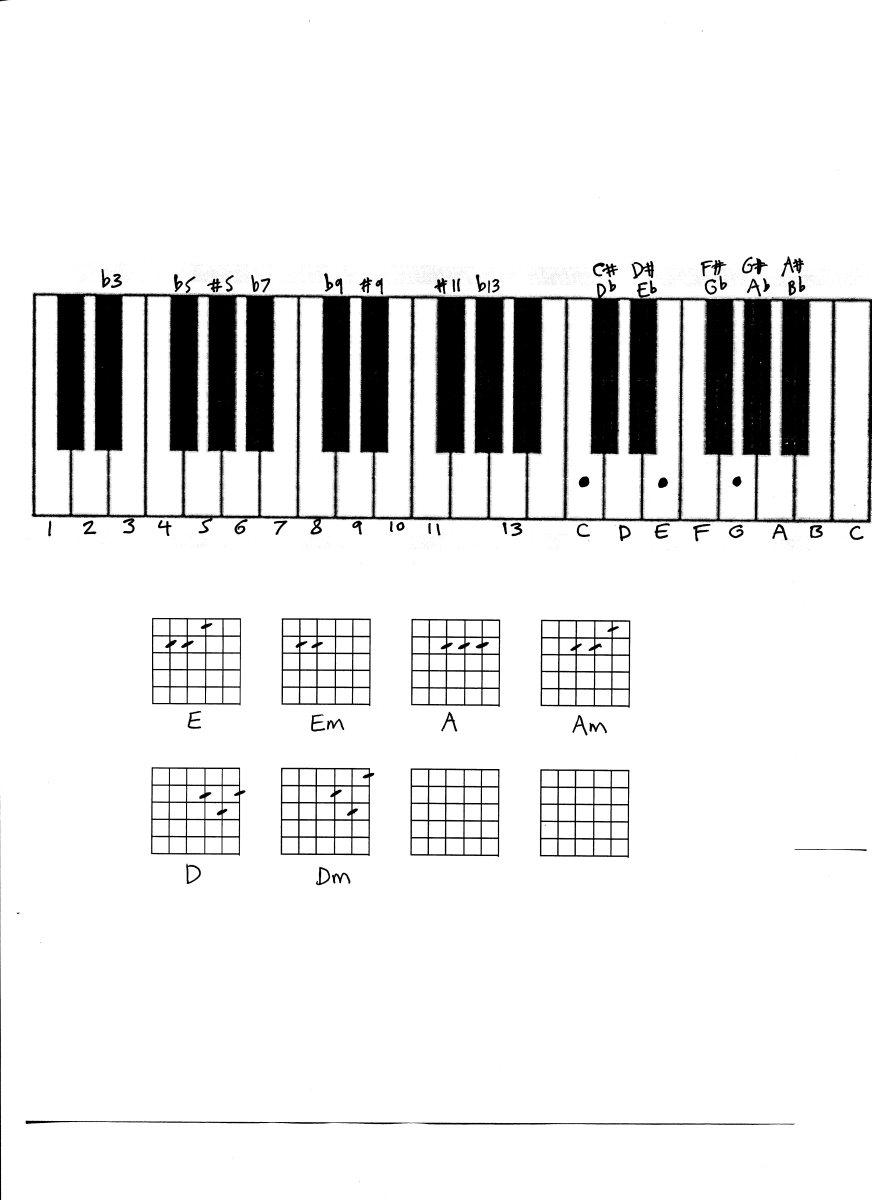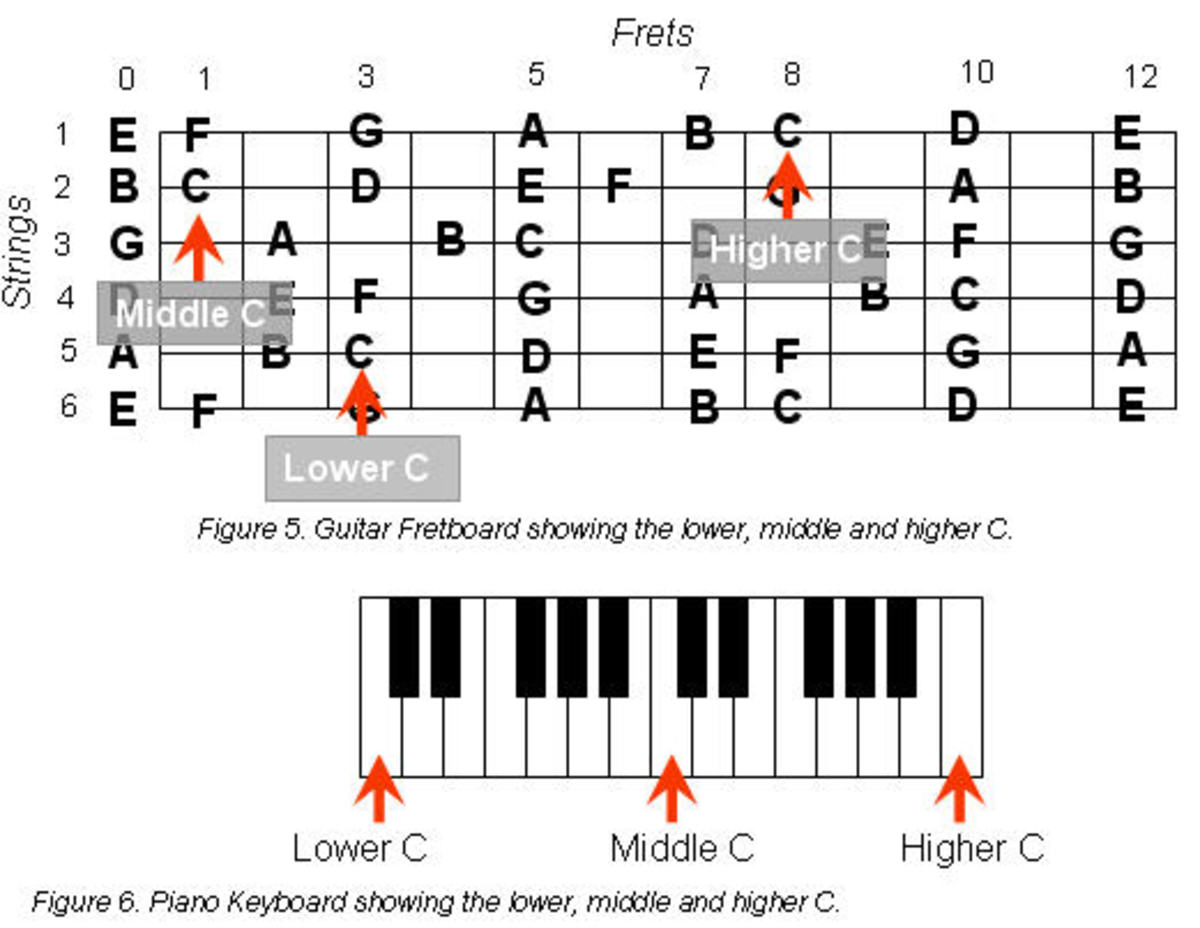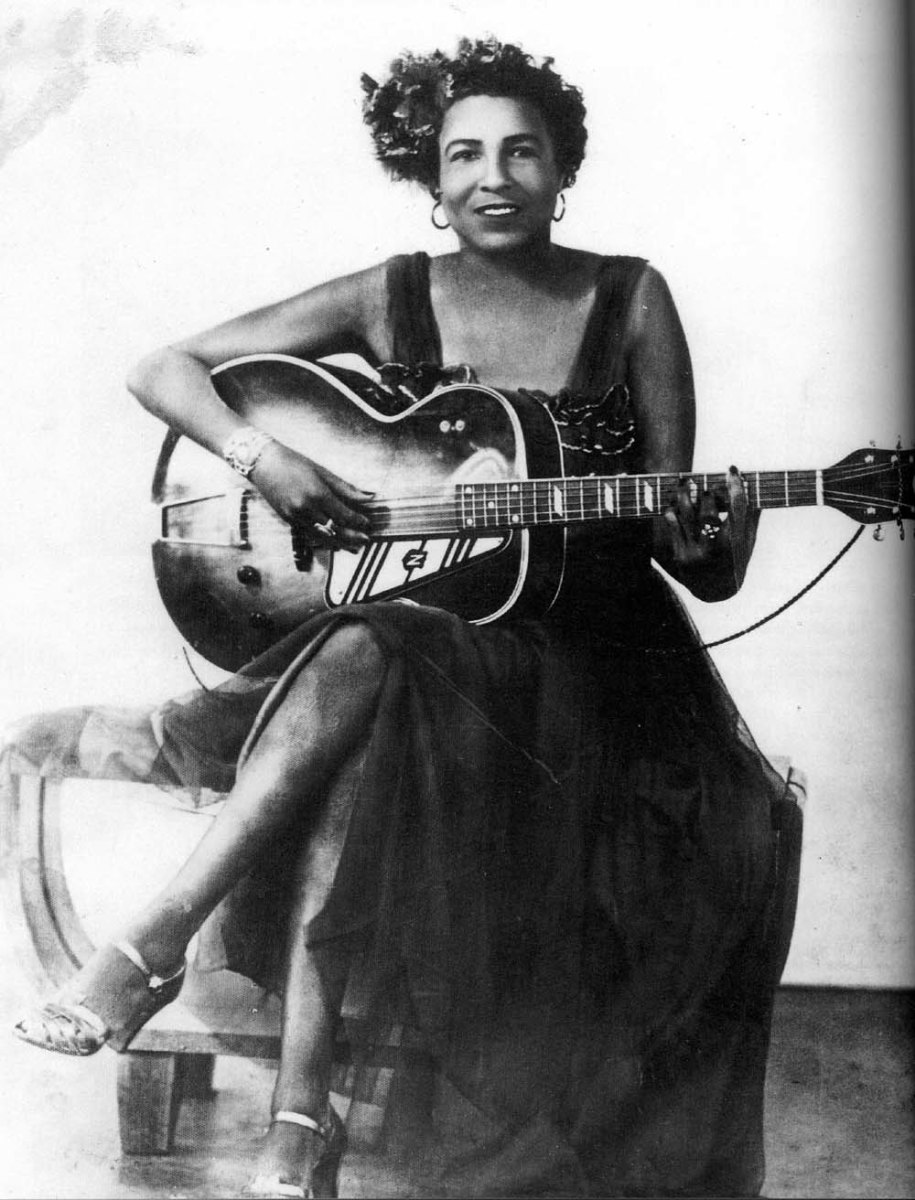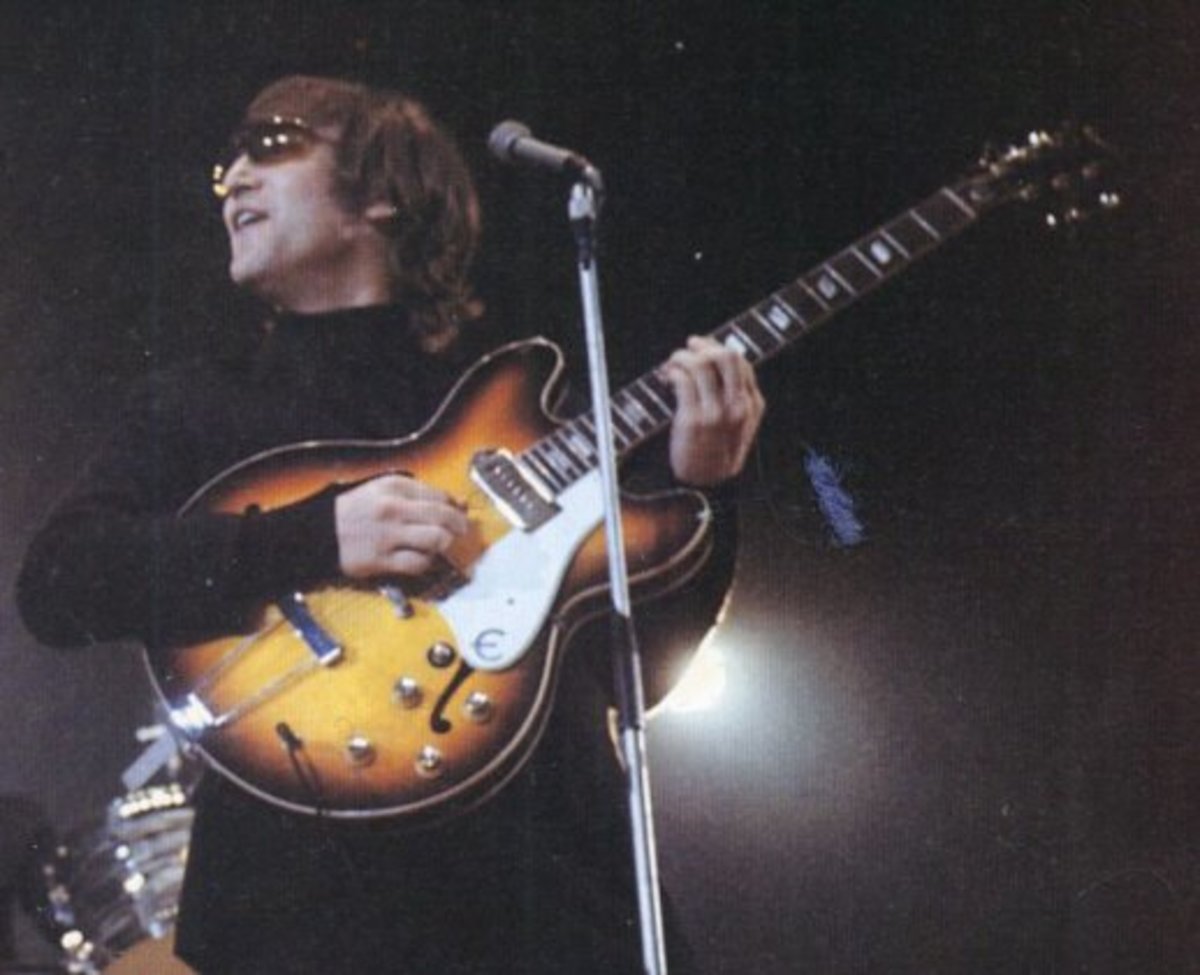Guitar - Playing Songs
Theory
Chords have a minimum of three notes, in intervals these would be 1, 3, 5 for a major chord. When we play guitar chords, usually there are more notes - as we are using 5 or 6 strings, but some of the notes are duplicated within the chord. A typical first position C chord will contain 2 C notes, 2 E notes, and a G, but we only really need 3 notes to construct a major or minor chord.
Major 7 (maj7) chords add the 7 interval to the mix, or 1, 3, 5, 7.
In the case of C the notes of a Cmaj7 are C E G B, and the notes of the scale are
C D E F G A B C
Why use these chords? If you replace an ordinary major chord with a maj7 it will tend to sound more lush, sophisticated and jazz -orientated. Generally, it will make everything sound better, in the same way that replacing a minor chord with a minor 7th chord will usually improve the harmony.
Practical application - when you understand and memorize this information, all the songs you learn will be much easier to play and also to remember.
C Harmonised scale
The harmonised scale for the key of C is shown in the chord grids. This is so you can try these chords out in a context. The chords are based on an ascending C major scale on string 5, but you can play them in many other different ways, and in fact this is really good practice, to find out how to play the same chords on different string groups.
Here are the chords in a C harmonised scale:
C Dm Em F G7 Am Bm7b5 C
Every chord follows the notes of the scale, C D E F G A B C.
In practice, the C and F chords can be maj 7ths, the G will always be a G7 chord, a dominant 7th chord, which may have extra notes added to it to form G9,G13 and many variations.
Guitar chords 101 and Guitar Chords 101 Part 2 have more info on guitar chords and how to use them.
Chord pictures
Here are some of the most widely used and most useful maj7 chords. They have a dreamy, romantic quality, as in Erik Satie's Gymnopedies piece, which begins with two maj7 chords.
Note that although these examples are using the key of C, every other key and harmonised chord scale follow the same pattern.
The chord pictures show the strings as vertical lines, and the frets as horizontal lines. These are barre chords, shown by the loop symbol, but once the concept makes sense, you can play them any way you want.
Chord grids
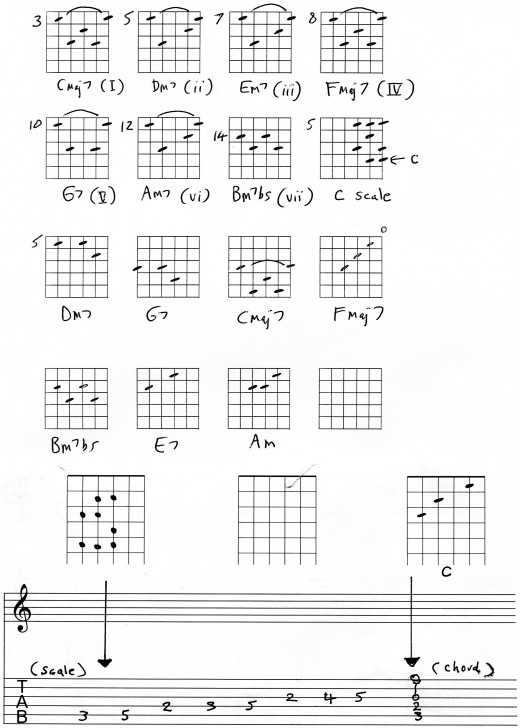
More on chords
Dm7, G7, C is called a ii-V-I chord progression,in the key of C, probably the most common progression in most styles of music. So it's a good idea to spend a lot of time practising it, as it has so many applications.
Bm7b5, E7, Am is a minor ii -V -I in the key of Am. Again, a very common chord sequence, especially in Jazz and Brazilian music.
Piano/keyboard theory
It's always easier to see how music theory works on the piano, and I encourage guitar players to learn the basics as it really doesn't take long compared to all the other things you might practice in order to improve your playing.
C maj7 chord
